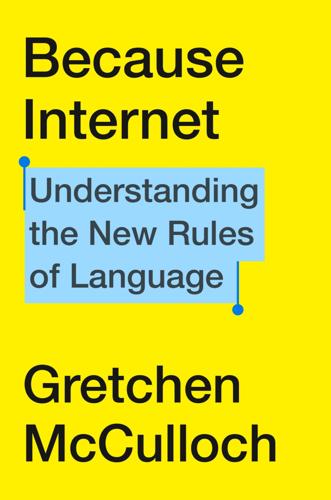
Because Internet: Understanding the New Rules of Language
by
Gretchen McCulloch
Published 22 Jul 2019
By joining the social internet after their parents were already there, they faced an especially dire version of “context collapse.” This is danah boyd’s term for when people from all your overlapping friend groups see all your shared posts from different aspects of your life. For adults who occasionally see a coworker’s personal photos or political updates, context collapse is a fairly minor issue, a problem of specific individuals being indiscreet. For young people, context collapse is a collective problem: they need space to figure out who they are, where they aren’t being constantly supervised by authority figures.
…
Common Sense Media. www.commonsensemedia.org/sites/default/files/research/socialmediasociallife-final-061812.pdf. in-person hangouts difficult . . . “Most teens”: danah boyd. 2015. It’s Complicated: The Social Lives of Networked Teens. Yale University Press. “context collapse”: danah boyd. December 8, 2013. “How ‘Context Collapse’ Was Coined: My Recollection.” Apophenia. www.zephoria.org/thoughts/archives/2013/12/08/coining-context-collapse.html. linguist Michelle McSweeney: Note that some of McSweeney’s examples are partially in Spanish because it was a bilingual corpus. I am presenting English translations as they appear in the paper itself.
…
massively popular New York Times dialect quiz: Josh Katz and Wilson Andrews. December 21, 2013. “How Y’all, Youse and You Guys Talk.” The New York Times. www.nytimes.com/interactive/2014/upshot/dialect-quiz-map.html. Regardless of who technically has access: Alice E. Marwick and danah boyd. 2011. “I Tweet Honestly, I Tweet Passionately: Twitter Users, Context Collapse, and the Imagined Audience.” New Media & Society 13(1). pp. 114–133. When the Library of Congress announced: Matt Raymond. April 14, 2010. “How Tweet It Is! Library Acquires Entire Twitter Archive.” Library of Congress Blog. blogs.loc.gov/loc/2010/04/how-tweet-it-is-library-acquires-entire-twitter-archive/.
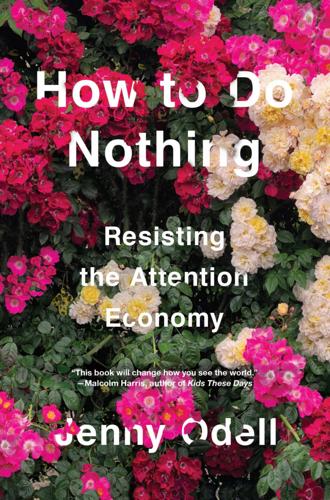
How to Do Nothing
by
Jenny Odell
Published 8 Apr 2019
Vox and other outlets have been quick to identify these experiences as examples of what technology and social-media scholar danah boyd would call “context collapse.” A 2011 study that boyd conducted with Alice E. Marwick found that Twitter users who had built the most successful personal brands did so by recognizing the fact that they no longer really knew who their audience was. To tweet was to throw a message into a void that could include close friends, family, potential employers, and (as recent events have shown us) sworn enemies. Marwick and boyd describe how context collapse creates a “lowest-common-denominator philosophy of sharing [that] limits users to topics that are safe for all possible readers.”4 When the alt-right weaponizes context (or lack thereof) in this way, not only is actual context ignored, but the targeted figures’ names can become triggers in themselves.
…
Ultimately, I argue for a view of the self and of identity that is the opposite of the personal brand: an unstable, shapeshifting thing determined by interactions with others and with different kinds of places. In the last chapter, I try to imagine a utopian social network that could somehow hold all of this. I use the lens of the human bodily need for spatial and temporal context to understand the violence of “context collapse” online and propose a kind of “context collection” in its place. Understanding that meaningful ideas require incubation time and space, I look both to noncommercial decentralized networks and the continued importance of private communication and in-person meetings. I suggest that we withdraw our attention and use it instead to restore the biological and cultural ecosystems where we forge meaningful identities, both individual and collective
…
I can’t help but liken the angry collective tweet storms to watching a flood erode a landscape with no ground-cover plants to slow it down. The natural processes of context and attention are lost. But from the point of view of Twitter’s financial model, the storm is nothing but a bounteous uptick in engagement. * * * — IN A 2013 blog post about whether or not she coined the term “context collapse,” boyd points to her indebtedness to a book by Joshua Meyrowitz called No Sense of Place: The Impact of Electronic Media on Social Behavior. Written in 1985 and mostly concerning electronic media like TV and radio, Meyrowitz’s work reads now as eerily prescient, ripe for translation by boyd into online terms.

Working in Public: The Making and Maintenance of Open Source Software
by
Nadia Eghbal
Published 3 Aug 2020
Instead of “competing for status in small tribes,” people find themselves “dropped into a talent show,” competing against strangers. Anthropologist Michael Wesch uses the term “context collapse” to describe how YouTube’s wide reach affects how people present themselves online. Instead of having in-person interactions, which occur within a specific context, YouTube creators experience “an infinite number of contexts collapsing upon one another into that single moment of recording.”122 While Wesch focuses on the effects of context collapse on individuals, online communities experienced their own version of context collapse when platforms turned the “panopticon” upon itself, inducing a flood of newcomers, spectators, and drive-by visitors.
…
Tague, “UNIX Time-Sharing System: Foreword,” The Bell System Technical Journal 57, no. 6 (1978): 1902, https://doi.org/10.1002/j.1538-7305.1978.tb02135.x. 118 Benkler, “Coase’s Penguin,” 379. 119 David Heinemeier Hansson, “The Perils of Mixing Open Source and Money,” November 12, 2013, https://dhh.dk/2013/the-perils-of-mixing-open-source-and-money.html. 120 Josh Lerner and Jean Tirole, “The Simple Economics of Open Source,” NBER Working Paper 7600, National Bureau of Economic Research, March 2000, 32, https://doi.org/10.3386/w7600. 121 Eugene Wei, “Status as a Service (StaaS),” Remains of the Day, February 19, 2019, https://www.eugenewei.com/blog/2019/2/19/status-as-a-service. 122 Michael Wesch, “YouTube and You: Experiences of Self-Awareness in the Context Collapse of the Recording Webcam,” Explorations in Media Ecology 8, no. 2 (2009): 19–34. 123 Robert E. Kraut and Paul Resnick, Building Successful Online Communities: Evidence-Based Social Design (Cambridge, MA: The MIT Press, 2016), 165. 124 Kraut and Resnick, Building Successful Online Communities, 128. 125 Coraline Ada Ehmke (CoralineAda), “Transphobic Maintainer Should Be Removed from Project,” Opal Issues, GitHub, June 18, 2015, https://github.com/opal/opal/issues/941. 126 Strand McCutchen (strand), “Create a Code of Conduct,” Opal Issues, GitHub, June 21, 2015, https://github.com/opal/opal/issues/942. 127 Kraut and Resnick, Building Successful Online Communities, 128. 128 Kraut and Resnick, Building Successful Online Communities, 217. 129 Kraut and Resnick, Building Successful Online Communities, 165. 130 Jamie Kyle (jamiebuilds), “(REVERTED): Add Text to MIT License Banning ICE Collaborators,” Lerna Pull Requests, GitHub, August 29, 2018, https://github.com/lerna/lerna/pull/1616. 131 Daniel Stockman (evocateur), “Chore: Restore Unmodified MIT License,” Lerna Pull Request, GitHub, August 30, 2018, https://github.com/lerna/lerna/pull/1633. 132 Pete Resnick, “On Consensus and Humming in the IETF,” IETF Tools, June 2014, https://tools.ietf.org/html/rfc7282. 133 “Viewing a Project’s Contributors,” GitHub Help, n.d., https://help.github.com/en/articles/viewing-a-projects-contributors. 134 “Viewing Contributions on Your Profile,” GitHub Help, n.d., https://help.github.com/en/github/setting-up-and-managing-your-github-profile/viewing-contributions-on-your-profile. 135 Dan Abramov (gaearon) Overview, Github screenshot, 2020, https://github.com/gaearon. 136 “Emoji Key (and Contribution Types),” All Contributors, n.d., https://allcontributors.org/docs/en/emoji-key. 137 All-Contributors Code, GitHub, accessed May 1, 2020, https://github.com/all-contributors/all-contributors. 138 Charlotte Hess and Elinor Ostrom, “A Framework for Analyzing the Knowledge Commons,” in Understanding Knowledge as a Commons: From Theory to Practice, eds.
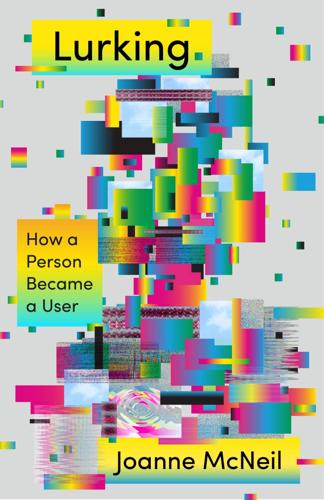
Lurking: How a Person Became a User
by
Joanne McNeil
Published 25 Feb 2020
This compartmentalization is never strict, and parts of one self will bleed into another, across many platforms and friendships, but it is fair to say that no one has the same conversation with their boyfriend that they do with their grandmother. In the past decade, on scaled-up mixed platforms where keeping identities pristinely separate is next to impossible, the resulting drama is known as “context collapse.” So let’s zoom out a bit. Rather than “end racism,” the internet does—however modestly—inspire people to think differently about race. Racism didn’t end in cyberspace because there was no talk of justice and decolonization or accountability underpinning these utopian scenarios of a future that looks like “all brothers.”
…
Lurkers weren’t just a possibility now, but an expectation; users could attain online a small-scale celebrity—akin to the most popular kid at school—or even real celebrity. These platforms introduced greater asymmetry of attention. Every public online activity in social media was posted in the possibility that somewhere, someone was a fly on the wall for it. A famous and innocuous example of context collapse at scale happened when a woman texting photos of a dress to her daughter initiated a global debate over whether it was white and gold or black and blue. But other examples are less whimsical. Someone tweeting an inside joke, thrust before a wider audience—even the world stage—that doesn’t get it, could be subject to harassment, or, at the very least, an unpleasant measure of attention.
…
Through these algorithms, relationships maintained on Facebook become Facebook-branded relationships—shaped toward its methods of sorting, prioritizing, and categorizing people. What’s really troubling is the “People You May Know” recommendation box. It suggests users to one another, at times leaking things like a sex worker’s identity to her clients, or a psychiatrist’s list of patients. The reporter Kashmir Hill maintains a list of these examples, which go beyond context collapse: a robber to his victim, the mistress who broke up a marriage forty years ago; a man who once donated sperm to a couple saw their child as a recommended friend. Facebook’s data gluttony and shamelessness created this tangled web. It makes these recommendations with what it has gathered from WhatsApp and Instagram data, of course, and scans cell phone contacts.

Terms of Service: Social Media and the Price of Constant Connection
by
Jacob Silverman
Published 17 Mar 2015
It’s worth stepping back for a moment and looking at what the digital/cultural landscape was like in the mid–2000s. Beginning in the early aughts, a generation of students was matriculating just as some of the traditional barriers between the cocoon of college and the outside world were breaking down. A media theorist would call this a form of context collapse—thanks to new technologies, different worlds were suddenly mixing, reading about one another. Stories about college life filtered through blogs and social media to the wider world. These stories weren’t new, of course, but firsthand accounts became easily disseminated to audiences well beyond campus.
…
But they probably couldn’t imagine how common and easy to use these tools would become, and how quickly one’s likeness could be spread through the world, whether you wanted it to be or not. THE OLD BARRIERS COME DOWN Although they didn’t have a term for it at the time, Brandeis and Warren were contending with what some theorists call “context collapse.” Technology and a growing cultural appetite for news and prurient gossip were eroding barriers between certain social settings. Traditionally private events and personal details were now being exposed to a wider public—in some cases, for the good. Today, the digitization of all manner of information, relationships, and cultural production and consumption means that it is increasingly difficult to keep these phenomena separate.
…
See companies Business Insider “BI,” 125 busyness, 321, 334–36 BuzzFeed overview, 114–15, 117–18 advertorials, 116–17 Boston Marathon bombing reports, 110–11 firehose approach to news, 112 free translators via language tutorials, 261–62 listicles, 114–15, 116–17, 118–19, 261 positivity, “no haters” policy, 115–16, 117 quizzes, 119–20 social and shareable news goal, 114, 115, 117 thisness, 118–19, 120 Upworthy compared to, 121–22 Byrne, Richard, x Caldwell, Dalton, 50, 95, 362–63 “Californian Ideology, The” (Barbrook and Cameron), 1–3, 4, 250–51 call and response (alerts), 50–53 cameras on smartphones, 41–42, 55, 57 Cameron, Andy, 1–3, 4, 250–51 Capitol Hill shooting, Washington, D.C., 108–9, 109n CAPTCHA tests, 260 career networks overview, 199 LinkedIn, 35, 165, 181, 199, 323 car insurance rate and grades, 282 Cashmore, Pete, 26 CCTV, 144, 287 celebrities amplified visibility of, 206–7 celebrity-driven marketing campaigns, 89, 93–94 coping with surveillance, 152 death hoaxes on Twitter, 348–49 paparazzi photos to sell back to celebrity, 211–12 retweets by, 146 and social media, 148–49 See also Internet fame cell phones, 131, 306, 317, 365 censoring yourself online, 12, 41, 80, 133, 257–58 Central Intelligence Agency (CIA), 323 Chapman, Taylor, 65–66, 67–68 charity and anonymity, 179–80 Chen, Adrian, 230 Chen, Lena, 75–77, 78–79, 80–82 Chesky, Brian, 219, 239 children, scrapbooking about, 46 China, 362 Chrome Web browser, Google, 262, 329–30 churnalism, 103–7 churnalistic cycle, 104 CIA (Central Intelligence Agency), 323 Circle, The (Eggers), 258 Cisco, 324 Clark, Michelle, 70 “Clearing 4 Months of Internet Cache” (F.A.T.), 360 Clementi, Tyler, 142–43 CNN articles translated into foreign languages, 261–62 Colding-Jørgensen, Anders, 163–64 collective privacy, 291 college culture, 77–78, 80, 132–33, 155–56, 286 Columbia Journalism Review, 127 communication in preliterate societies, 62–63 Community Leader Program, AOL, 263 companies overview, ix abusive labor practices, 266–67n consumers sharing in marketing process with, 32–33, 34–35, 58–60 and Do Not Track signals, 296–97, 306 and fractional workers, 232–33 free translations by digital serfs, 261–62 power of, 283 and quantified selfers’ data, 138–39 and reputation management, 216–17 serving their own interests, 310 and sharing economy, 238–39 See also advertising; tech companies computational voice analysis, 40–43 comScore, 96 confessionalism or over-sharing, 22–23, 23n Connect tool, Facebook, 16–17 consciousness inward-looking, quieter elements of, 48, 62 self-consciousness, 342–43, 345 ConstantUpdate.net, 362–63 “Constituents of a Theory of the Media” (Enzensberger), 101 consumerism, 346 Consumer Privacy Bill of Rights, 296–97 Consumer Reports magazine, 310 consumers educating themselves about data collection, 326–27 EU and European privacy protections, xiii, 275 joining corporations in marketing process, 32–33, 34–35, 58–60 news consumers’ culpability, 109 as news contributors, 110–11 and prosumption, 270–73 and self-service culture, 270 tracking interaction with retail store displays, 301 See also human beings consumption recommendations, 202 content licenses for e-books, 255 content moderators, 230–31, 244 context collapse and privacy, 290–92 continuous partial attention, 51–52 contractor reviews, 191 cookies, 306 Coolidge, Calvin, 23 Corona, Fabrizio, 211–12 corporations. See companies corrections in memes, 105, 106–7 costs of “free” service, 254–55, 265–66, 266n, 273, 275, 281–82 Court Ventures, 215 Craigslist, 264 Crawford, Kate, 315 credibility markers, 197 credit reporting agencies, 192, 215 critics, professional, replaced by reviewers, 189 Crockford, Kade overview, 364–65, 367–68, 370–71 cost-benefit analysis of social media rebellion tools, 369–70 on encryption, 368–69 on surveillance, 370 crowdfunding, 355 crowdsourcing, 260–63, 264–65.
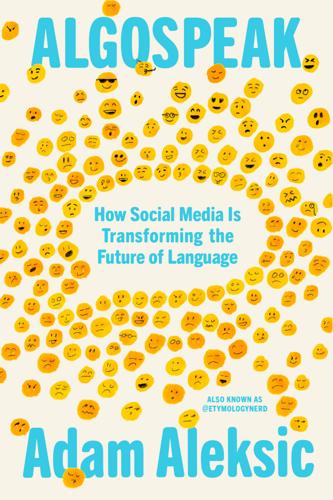
Algospeak: How Social Media Is Transforming the Future of Language
by
Adam Aleksic
Published 15 Jul 2025
I watched the same thing happen with the phrases “touch of the tism” and “neurospicy,” which similarly spread from the neurodivergent community to take on negative or infantilizing connotations in other corners of social media. This cycle keeps happening because the algorithm creates communities that feel as if they have a space to create and use certain words, but then opens up those same communities just enough to allow certain in-group words to spread with memes and trends. This is a new phenomenon called context collapse. Because there are so many different audiences interacting on social media, communication intended for one audience often finds unintended audiences, which could process it in a different context and then use the information in a new way (in these cases, as general jokes rather than specific in-jokes).[3] In real life, an in-group can regulate and define linguistic norms fairly well.
…
“The Algorithm Really Knows Me” Pia Ceres, “Quoting Taylor Swift Lyrics Is an Actual Linguistic Thing,” Wired, Feb. 3, 2023. BACK TO NOTE REFERENCE 1 Narayanan, “Understanding Social Media Recommendation Algorithms.” BACK TO NOTE REFERENCE 2 Alice Marwick and Danah Boyd, “I Tweet Honestly, I Tweet Passionately: Twitter Users, Context Collapse, and the Imagined Audience,” New Media & Society 13, no. 1 (2011), 114–33, doi.org/10.1177/1461444810365313. BACK TO NOTE REFERENCE 3 Sydney Lambert, “The TikTok Effect: How the Social Media App Helps Spread Autism Misinformation,” National Council on Severe Autism, Oct. 18, 2023, www.ncsautism.org.
…
Criminal, offensive side-eye,” 42 boobs, 20 book sales, 172 boomer ellipses, 71–72 boomers, 186–89, 204 Boston newspapers, 38, 49, 108 Bowdler, Thomas, 18 bowdlerization, 17–19, 28, 31 brainrot, 46, 126, 133, 136–37, 141, 153, 160, 191–96, 199, 213 branding campaigns, 176 brat summer, 175–76 Britain (UK), 39, 81, 92, 145 British accent, 80–81, 86, 91, 97, 215–16 East Midlands, 37, 145, 160 Received Pronunciation (Queen’s), 92 broadcast media, 51, 93–95 Brooks Brothers, 177 bruh, 146 btch, 17, 19 budget airline, 72 bulletin boards, 14–15, 35 bullying, 4 Bunyan, Paul, 197 bussin, 146, 211 butt, substitutions for, 44, 153 BuzzFeed, 67 ByteDance, 6, 40, 70, 172 C cadence, 88, 95 campcore, 165 Canada, 211 canceling, 55–56 canon events, 202 canthal tilt, 132, 138 cap, 146, 160, 190, 210 captchacore, 164 captions, 45, 48–49, 60–61 Carlson, Tucker, 65, 68 Carr, Gene, 18, 18 “Categories of Art” (Walton), 184 categorization, 201, 203–4 censorship, 8, 14–15, 21–25, 108–9, 109, 209, 218–19, 221 Chads, 124–25, 129, 133, 136, 139, 141–42 “Chad versus virgin,” 134, 137, 139 chair emoji , 52–55, 54 character arcs, 202 Charles Dickens Museum, 16–17 Charli XCX, 175, 176 Chaucer, Geoffrey, 220 Chayka, Kyle, 218 cheeto, 25 cheh, 208 cherries emoji , 20–21 Chicago gangs, 152 Chief Keef, 152 child of Deaf adults (CODA), 217 Chile, 206 China, 6, 209–10 chronological feeds, 182 circular language, 31 “ck,” replaced with “cc,” 152 classical music videos, 120 “clean girl,” 166 Clement, Bernadette, 211 click-baiting, 67–68, 70–71, 78 cliques, 102 “closet with wings,” 72 clowncore, 164 “coastal cowgirl,” 166 Cobain, Kurt, 3, 10 Cockney rhyming slang, 21, 35, 191 coded speech, 34 code-switching, 32, 36, 52, 79–80, 87, 90–91, 97, 102, 216 colored, 30 commercialization, 182–85, 212–13 “commit suicide,” 22–23, 208 commodification, 181–82 communities, building, 168, 200 community guidelines, 16, 20, 28 complex systems, 106, 111–14 concept, etymology of, 69, 69n “cone bread,” 156 conflicts, 26–27 content creators, 52, 71, 79, 99 attention and, 69–72 niche audiences and, 101 trending words and, 45–46 content moderation, 8, 14–15 content valence, 62 context collapse, 115 cool, 144–46, 149, 155–57, 160–62 Cool Blues (album), 145 cope, 130, 136 copyright law, 157–58 coquette, 166 corecore, 169, 213 -core suffix, 164–67, 169, 172, 174, 183 “corn,” 21, 34 “corn bread,” 156 corn emoji , 21 corporations, 213 Correa, Sofia, 129–30, 134 cottagecore, 164–70, 172, 174, 183–84, 195, 219 counterculture, 145–46 creator economy, 173 Creator Rewards Program, 164 cringe, 45, 119, 166, 191, 213 Crips gang, 151–52, 157 crying emoji, 188 “Crying Michael Jordan,” 155 Crystal, David, 10n, 34, 48 cucked, 128, 142 cucks, 125 cuh, 152 cults, 128–29 cultural and ethnic boundaries, 150 cultural references, 197 “cunt,” 17 curiosity gap, 59–60, 67, 159 currycels, 135, 138 cursing and swear words, 17–19 cutandcropped boutique, 177–79 cyberbalkanization, 110 cybergoths, 184 D D’Amelio, Charli, 159–60, 173 dances, 39 dangerous memes, 137–39, 142–43.
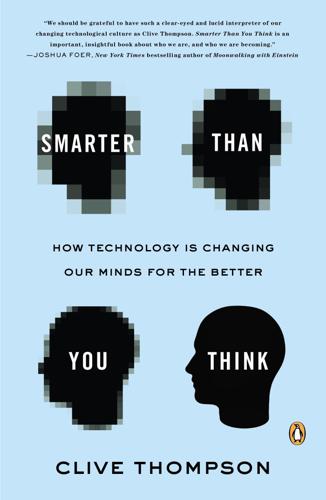
Smarter Than You Think: How Technology Is Changing Our Minds for the Better
by
Clive Thompson
Published 11 Sep 2013
“It gets complicated quickly,” says danah boyd, a researcher at Microsoft who has done pioneering studies of how online socializing affects people’s lives, when I interview her. As she points out, the challenge that comes with broadcasting bits of your life is that you live with an “invisible audience;” you’re never quite sure who’s going to see this stuff, or when. Since anything online can be copied and circulated, you also get what boyd calls “context collapse”: sexy talk meant for your partner gets seen by your mother when you accidentally mismanage the settings on your social tools. In 1984, Orwell popularized Jeremy Bentham’s concept of the panopticon, a technological structure in which powerful forces can watch you but you can’t see them. This forces you to assume that you’re always being watched, a mental head game that deforms behavior.
…
Today, plenty of similarly powerful forces eagerly observe your online behavior. Firms like Facebook are free only because they carefully collect our ambient signals, the better to sell us to advertisers. (As the joke goes, if you’re not paying for a service, it’s because you’re the product.) Indeed, Facebook CEO Mark Zuckerberg explicitly favors context collapse. He has said he believes there’s something shady about having different sides to your personality. “The days of you having a different image for your work friends or co-workers and for the other people you know are probably coming to an end pretty quickly. . . . Having two identities for yourself is an example of a lack of integrity,” as he told David Kirkpatrick in The Facebook Effect.
…
Indeed, some of the most interesting conversations I encounter online happen in smaller-scale, less-populated discussion forums devoted to hobbies. Because small forums cost almost nothing to run, hobbyists don’t need to succumb to the privacy-eroding logic of monetization. And in smaller, more intimate groups, participants worry less about context collapse. Other forums—like the infamous 4chan or the mothers’ board YouBeMom—offer radical anonymity as a way to encourage people to speak freely, and the conversations there are more freewheeling, for good and ill, than just about anywhere online. The culture of being always on—available to respond to any social ping, and feeling compelled to do so—may also fade.

Ten Arguments for Deleting Your Social Media Accounts Right Now
by
Jaron Lanier
Published 28 May 2018
This problem has lately been associated with the Facebook feed, but it is a BUMMER-wide failure. It was already a problem before the Facebook feed existed.5 Now that Facebook has announced it will deemphasize news in its feed, maybe things will get a little better; nonetheless, it’s hard to imagine that news will now be instantly free of BUMMER-driven context collapse. In order for the news to regain context, people will have to discover news through non-BUMMER systems. What will these systems be? Hopefully people will develop direct relationships, even more hopefully with subscriptions, to sources of news and other content. In the meantime, there are many problems with the subsuming of journalism to the god of statistics.

Twitter and Tear Gas: The Power and Fragility of Networked Protest
by
Zeynep Tufekci
Published 14 May 2017
For a discussion of such destructive dynamics in the context of Egypt and elsewhere, see Mahmoud Salem, “You Can’t Stop the Signal,” World Policy Journal 31, no. 3 (2014): 34–40; and Marc Lynch, “Twitter Devolutions,” Foreign Policy, February 7, 2013, https://foreignpolicy.com/2013/02/07/twitter-devolutions/. 30. M. Wesch, “Context Collapse,” Digital Ethnography, July 31, 2008, http://mediatedcultures.net/projects/youtube/context-collapse. 31. Tahi L. Mottl, “The Analysis of Countermovements,” Social Problems 27, no. 5 (1980): 620–35. 32. K. Hampton, L. Rainie, W. Lu, M. Dwyer, I. Shin, and K. Purcell, “Social Media and the ‘Spiral of Silence,’” Pew Research Center, August 26, 2014, http://www.pewinternet.org/files/2014/08/PI_Social-networks-and-debate_082614.pdf; and Amanda Lenhart, Michele Ybarra, and Myeshia Price-Feeney, “Online Harassment, Digital Abuse, and Cyberstalking in America,” Data and Society and CIPHR Report, November 21, 2016, https://www.datasociety.net/pubs/oh/Online_Harassment_2016.pdf. 33.
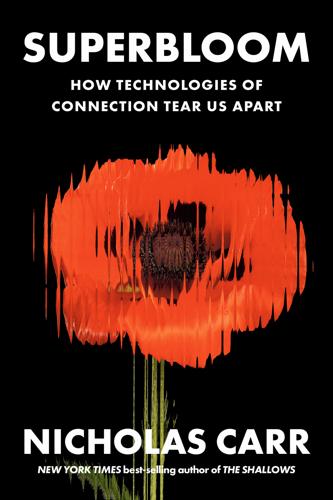
Superbloom: How Technologies of Connection Tear Us Apart
by
Nicholas Carr
Published 28 Jan 2025
They’re at a distance from society, alone with their own thoughts. 12.Erving Goffman, Relations in Public: Microstudies of the Public Order (New York: Basic Books, 1971), 70. 13.Joshua Meyrowitz, No Sense of Place: The Impact of Electronic Media on Social Behavior (New York: Oxford University Press, 1985), 41ff. 14.For a Freudian take on the net’s effects, see Mark Edmundson, The Age of Guilt: The Super-Ego in the Online World (New Haven, CT: Yale University Press, 2023). 15.Jia Tolentino, Trick Mirror (New York: Random House, 2019), 14. 16.Meyrowitz, No Sense, 125. 17.Danah Boyd, “None of This Is Real: Identity and Participation in Friendster,” in Structures of Participation in Digital Culture, ed. Joe Karaganis (New York: Social Science Research Council, 2007), 132–157. 18.Michael Wesch, “YouTube and You: Experiences of Self-Awareness in the Context Collapse of the Recording Webcam,” Explorations in Media Ecology 8, no. 2 (2009): 19–34. 19.David Kirkpatrick, The Facebook Effect: The Inside Story of the Company That Is Connecting the World (New York: Simon & Schuster, 2010), 199. 20.S. Dixon, “Global Social Media Account Ownership from 2013 to 2018,” Statista, April 28, 2022. 21.James A.
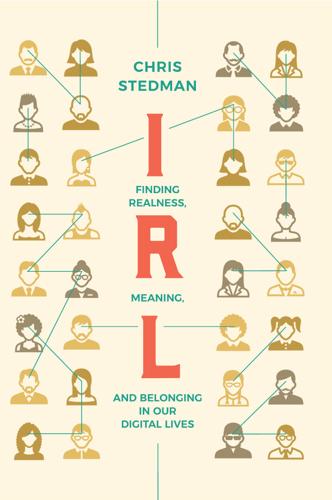
IRL: Finding Realness, Meaning, and Belonging in Our Digital Lives
by
Chris Stedman
Published 19 Oct 2020
“Obviously, the bits of information we’re assailed with on Twitter and Facebook feeds are missing both these kinds of context.” “Scrolling through the feed,” continues Odell, “I can’t help but wonder: What am I supposed to think of all this? How am I supposed to think of all this?” Technology scholar danah boyd calls this “context collapse,” and it can cause us to try to be everything for everyone, posting only stuff that feels safe. If there’s no context online, we can feel compelled to post only that which can exist without it. But could it be we just haven’t spent enough time online yet to master its intricacies, that it’s too new, and we’re too inexperienced?

Pauline Frommer's London: Spend Less, See More
by
Jason Cochran
Published 5 Feb 2007
Joseph Beuys’ oversize, haphazard-seeming installation Lightning with Stag in its Glare (room 6, Poetry and Dream) also wins plaudits, although perhaps its influence is not mature enough to be deeply known. Modern art can be bewildering, but the Tate’s exceptional array of touring aids can make sense of oddity. Just £2 will rent a tremendous multimedia tour of the highlights that plays on a Blackberry-like device that shows you additional images as it embellishes on the works’ meaning and context. Collapsible stools, interspersed around the galleries on wall-mounted racks, are another thoughtful touch for those who like to sketch artwork. There are two free daily guided tours of the general collection, usually at 11am and 3pm; ask at the ground floor information desk to find out where they meet.

The Age of Surveillance Capitalism
by
Shoshana Zuboff
Published 15 Jan 2019
There is an extensive literature on this topic, but two articles that specifically reference “chilling effects” in social media are Sauvik Das and Adam Kramer, “Self-Censorship on Facebook,” in Proceedings of the Seventh International AAAI Conference on Weblogs and Social Media, 2013; Alice E. Marwick and danah boyd, “I Tweet Honestly, I Tweet Passionately: Twitter Users, Context Collapse, and the Imagined Audience,” New Media & Society 13, no. 1 (2011): 114–33. 64. Shoshana Zuboff, file note, November 9, 2017, Queen’s University, Kingston, Ontario. 65. Ben Marder, Adam Joinson, Avi Shankar, and David Houghton, “The Extended ‘Chilling’ Effect of Facebook: The Cold Reality of Ubiquitous Social Networking,” Computers in Human Behavior 60 (July 1, 2016): 582–92, https://doi.org/10.1016/j.chb.2016.02.097. 66.